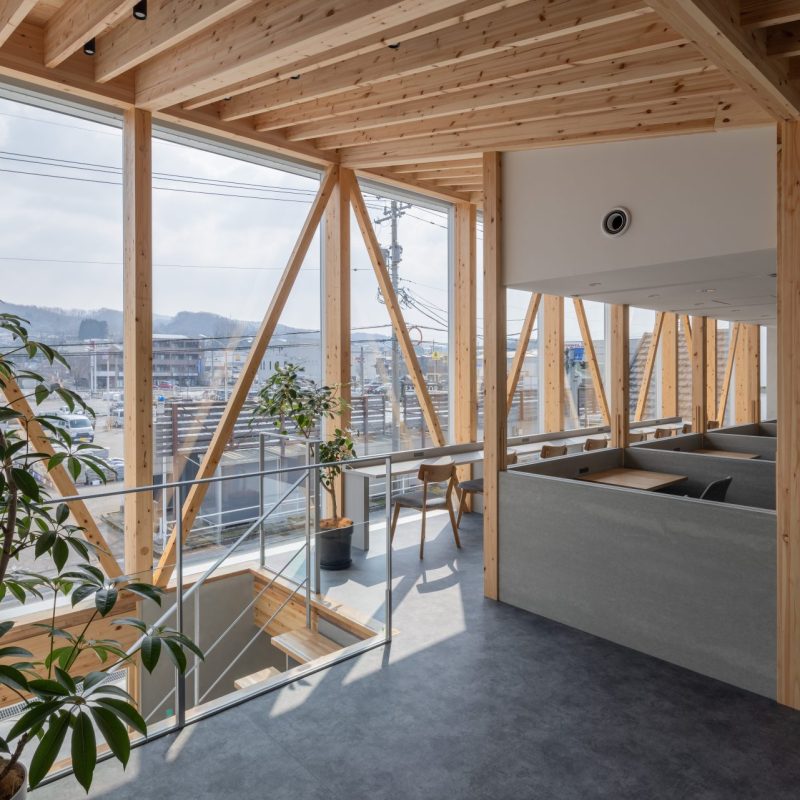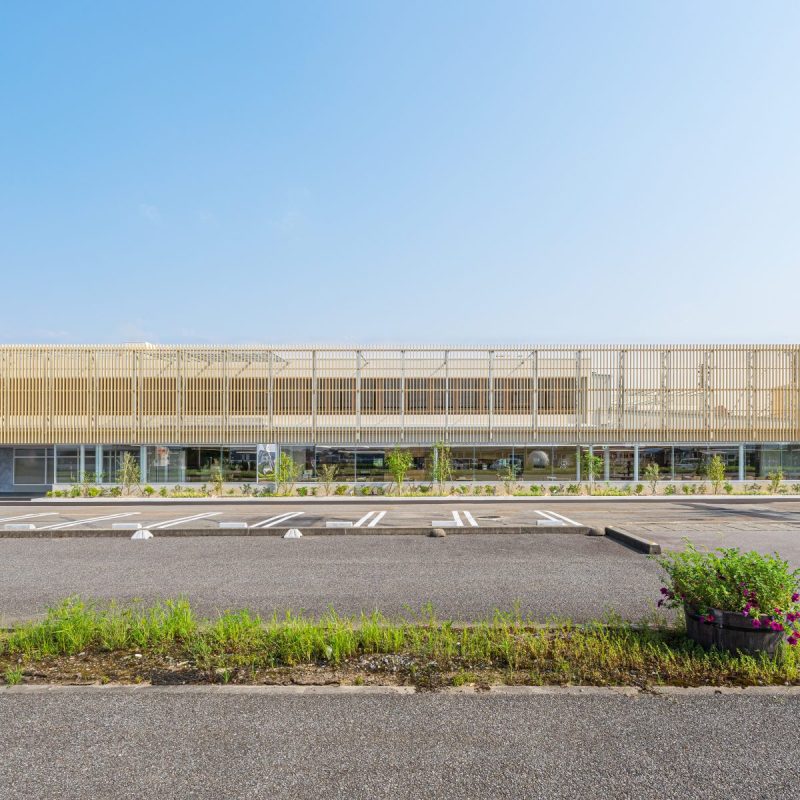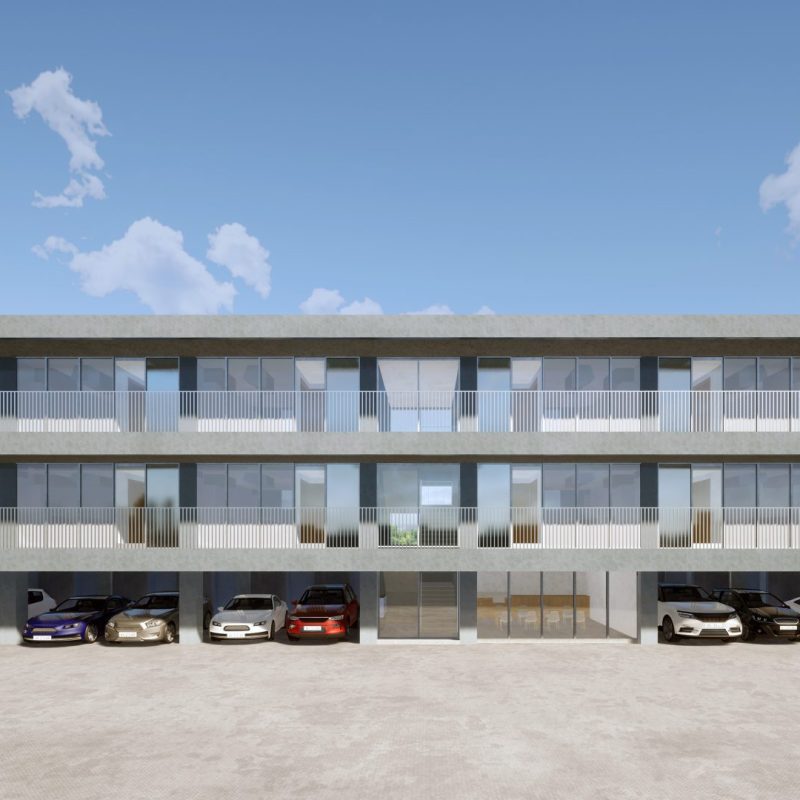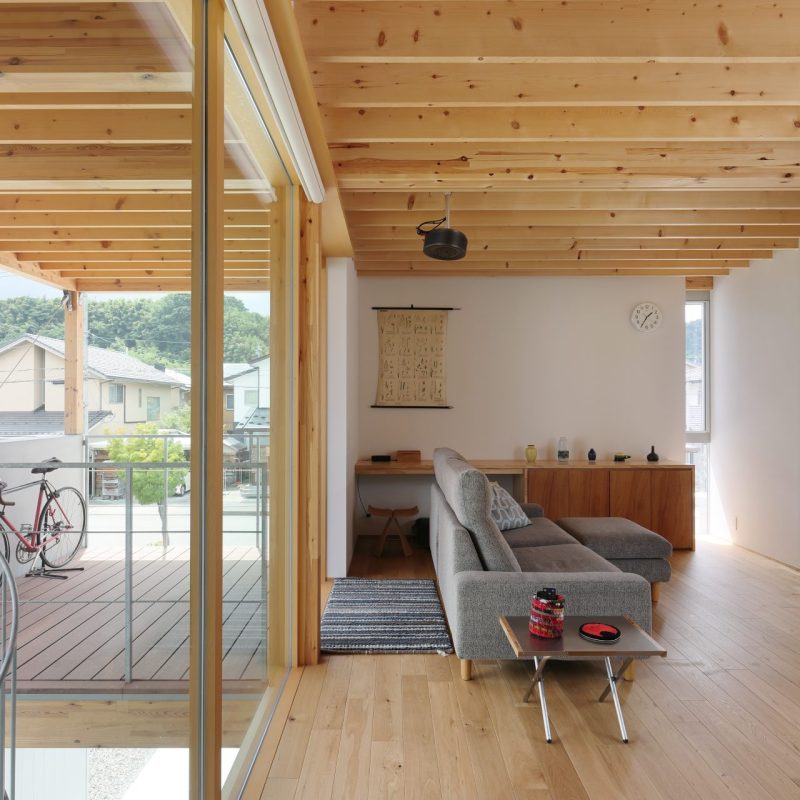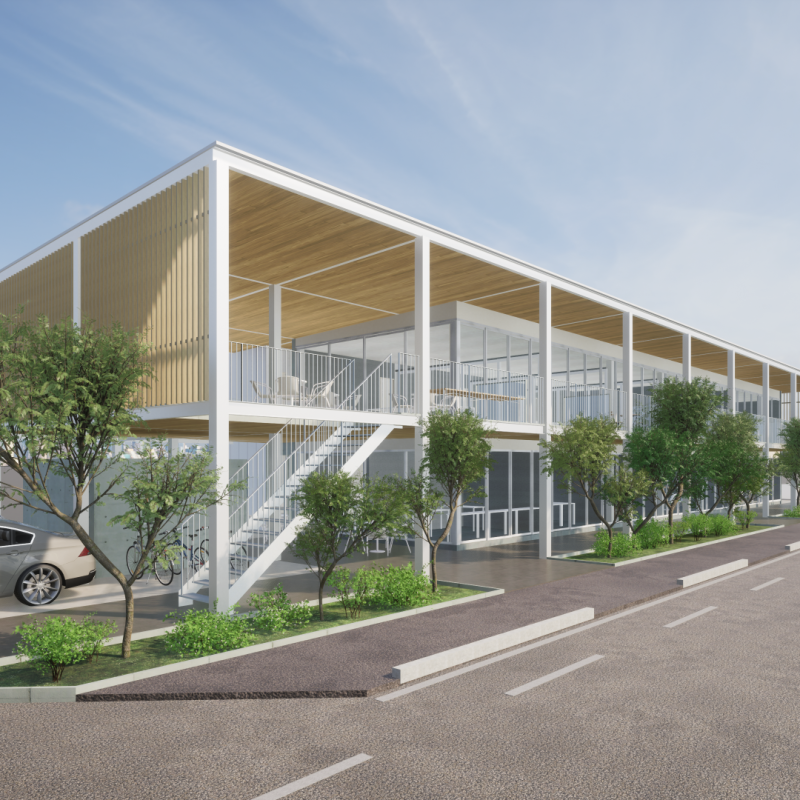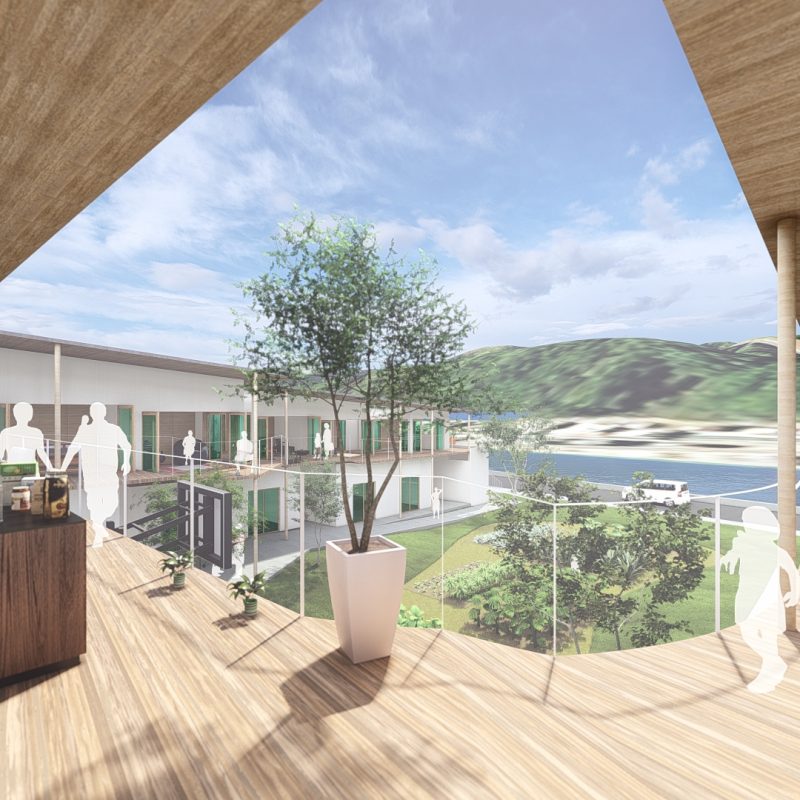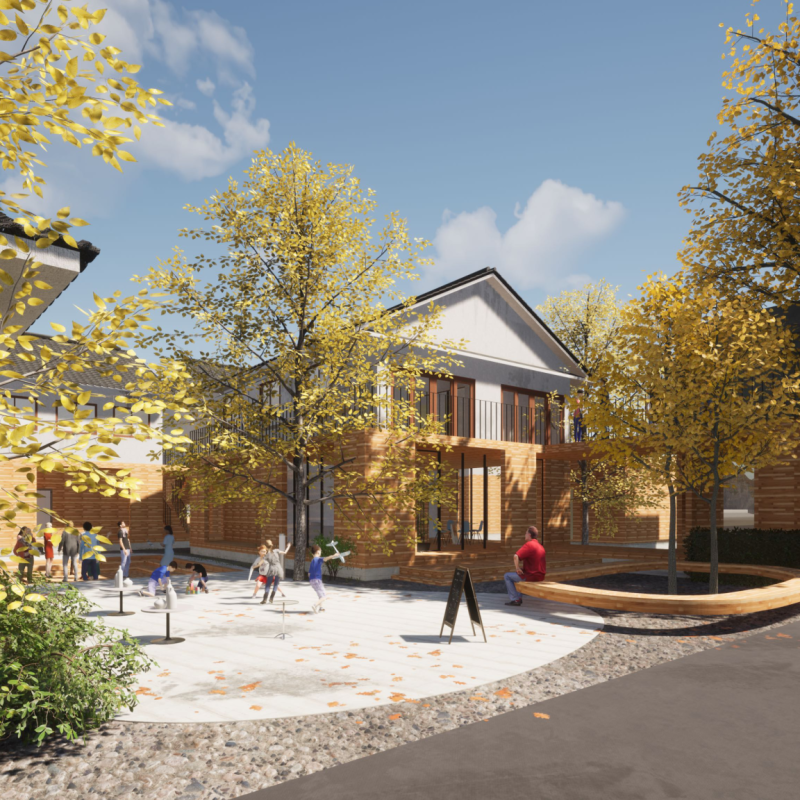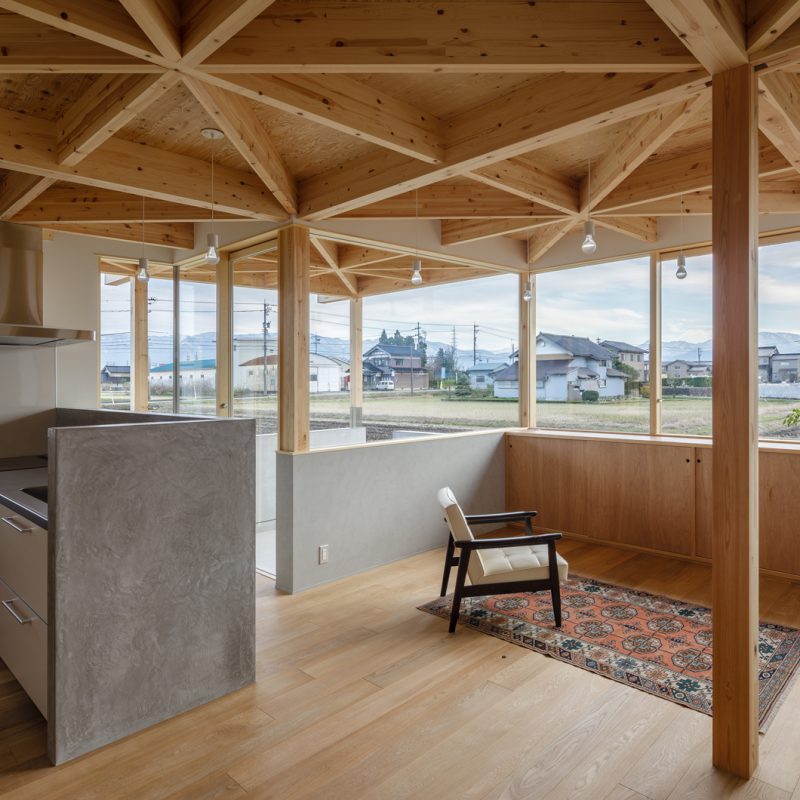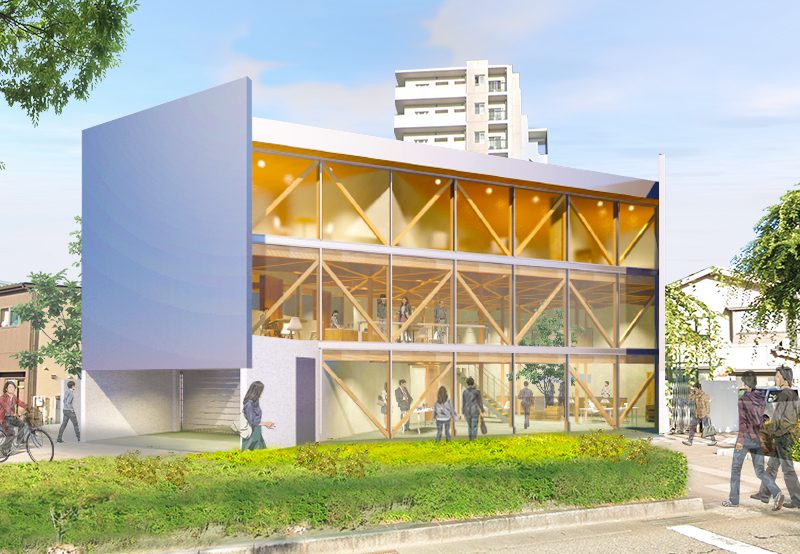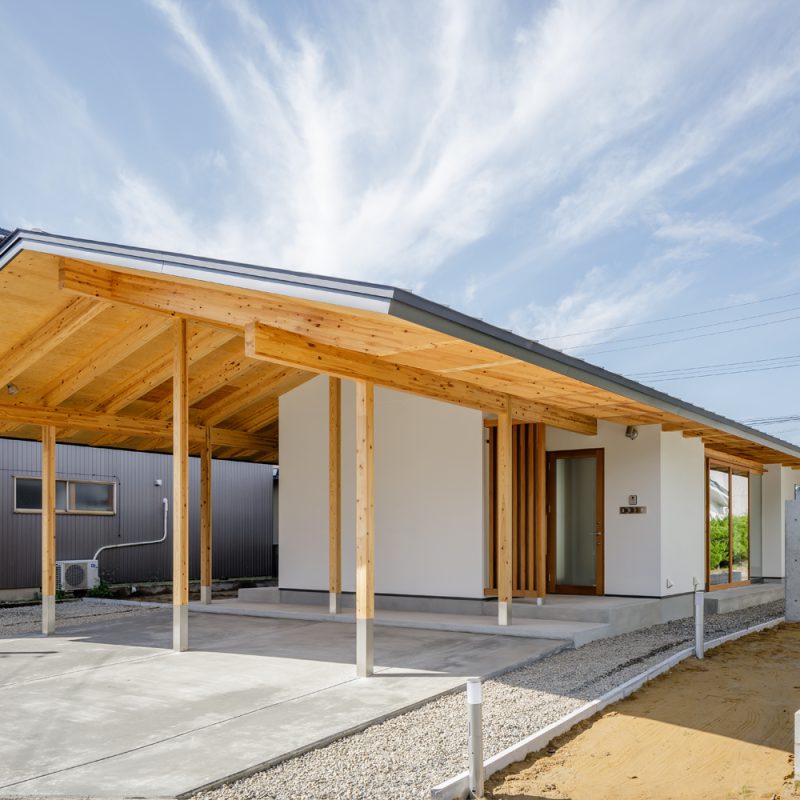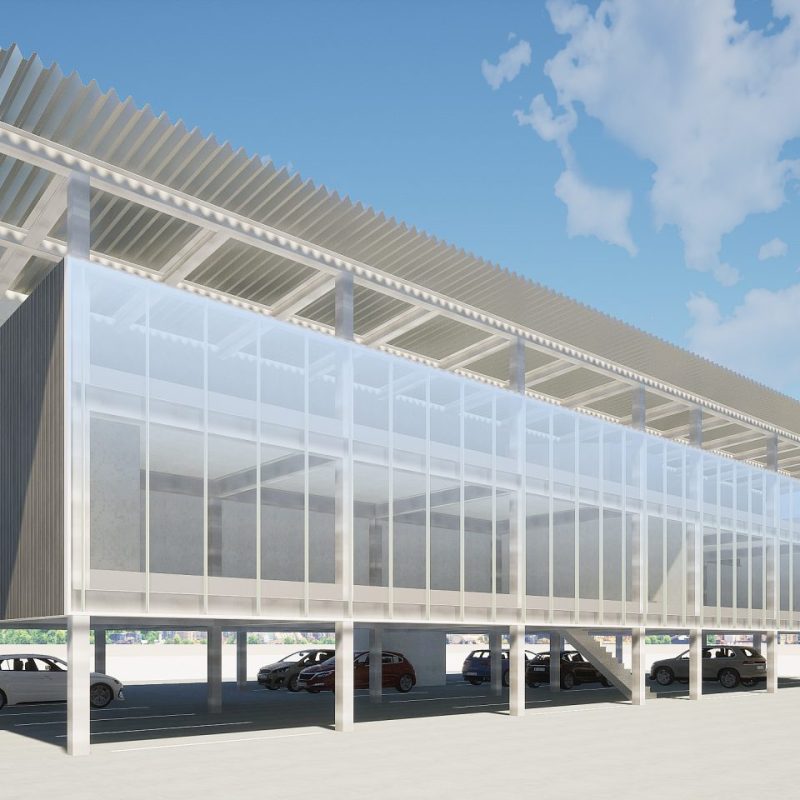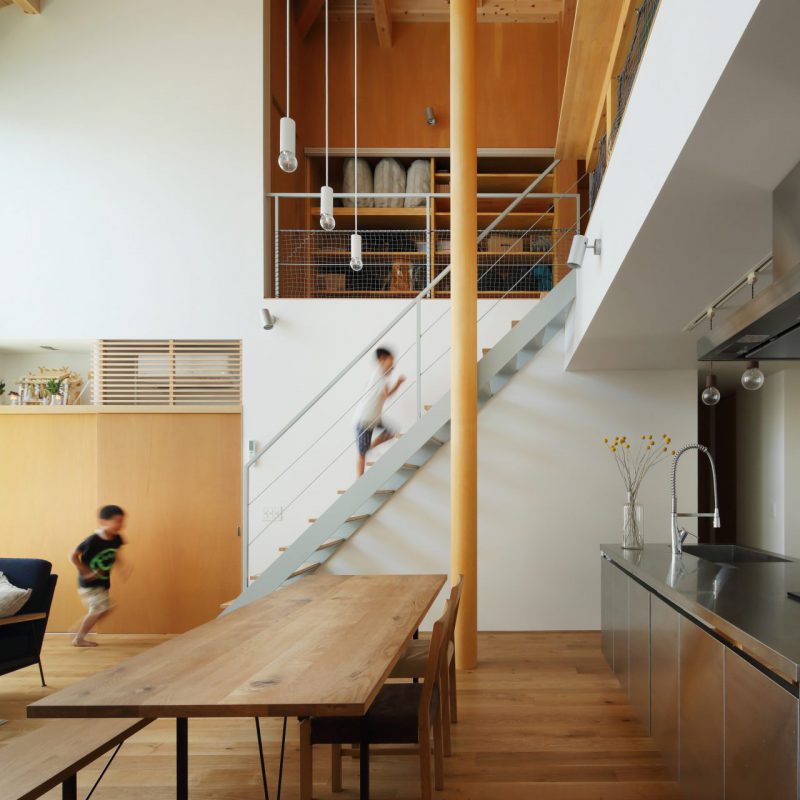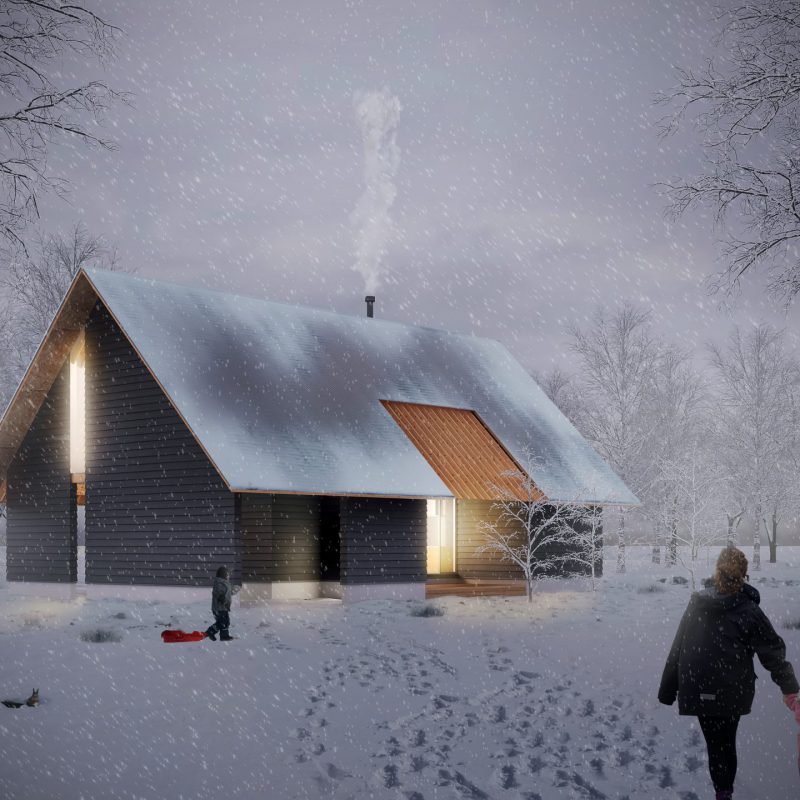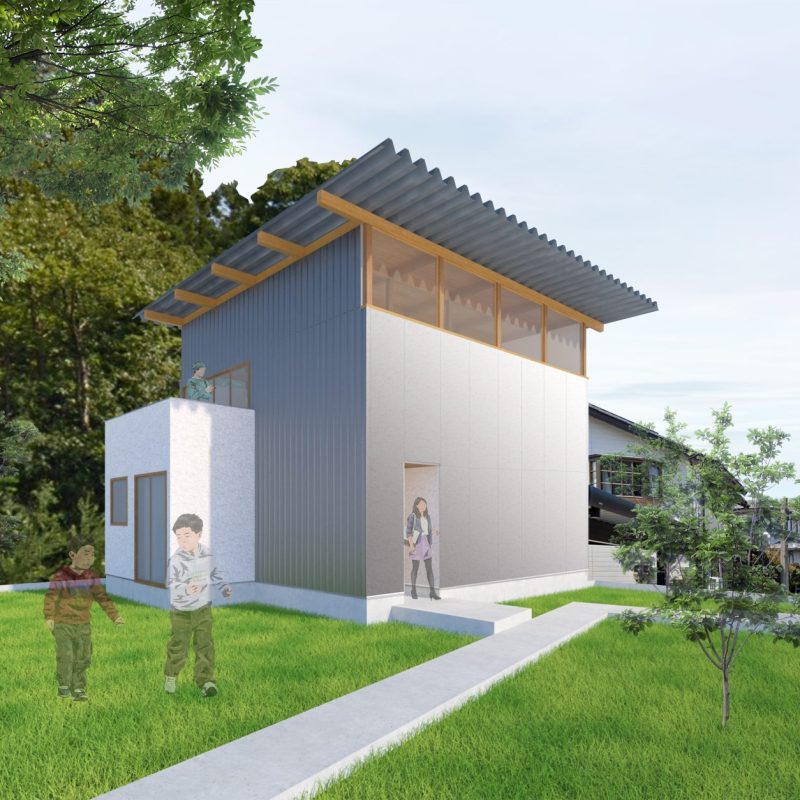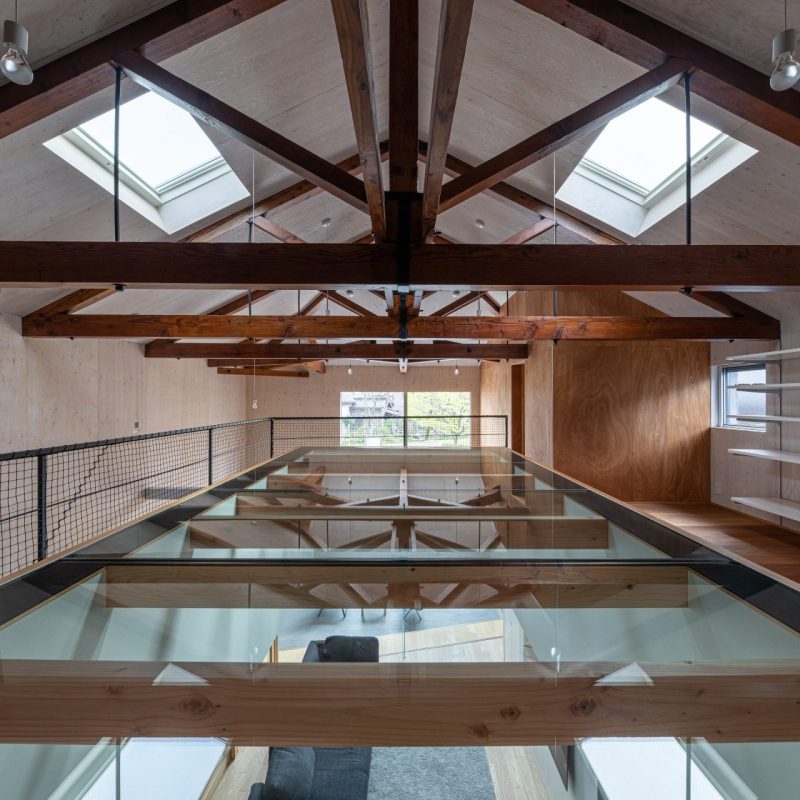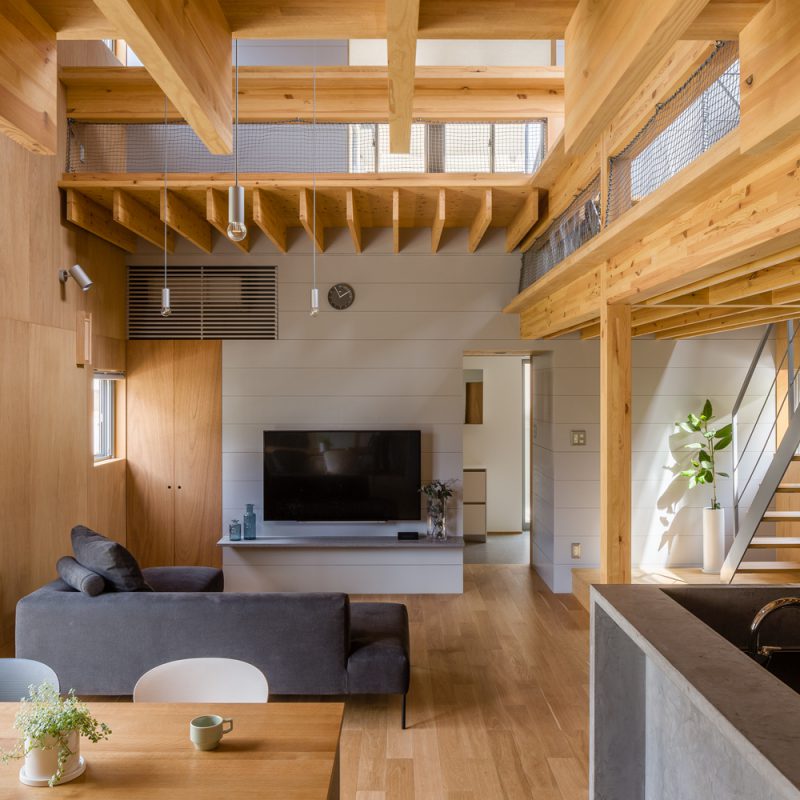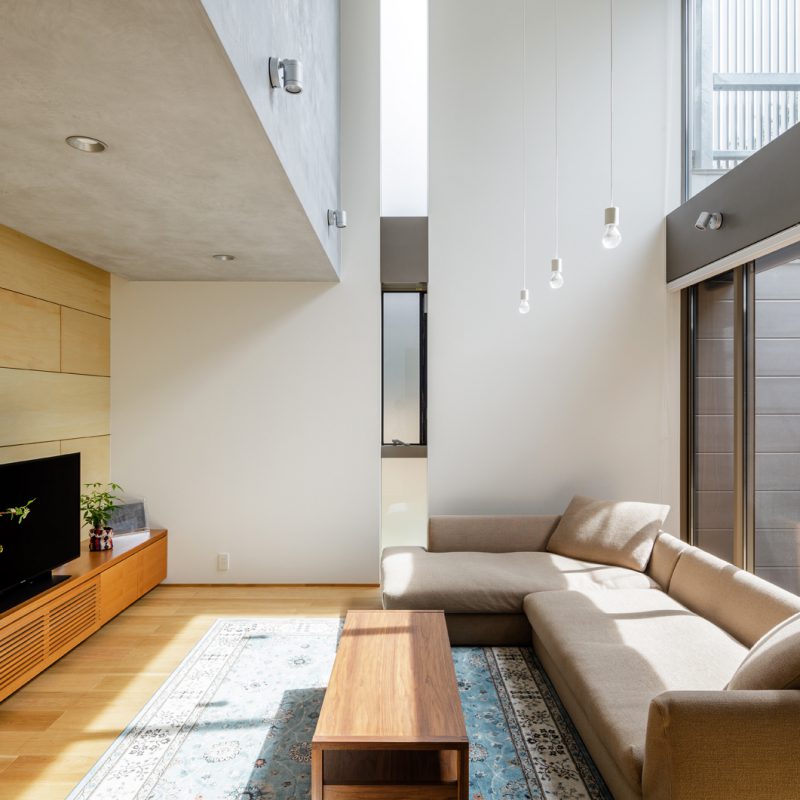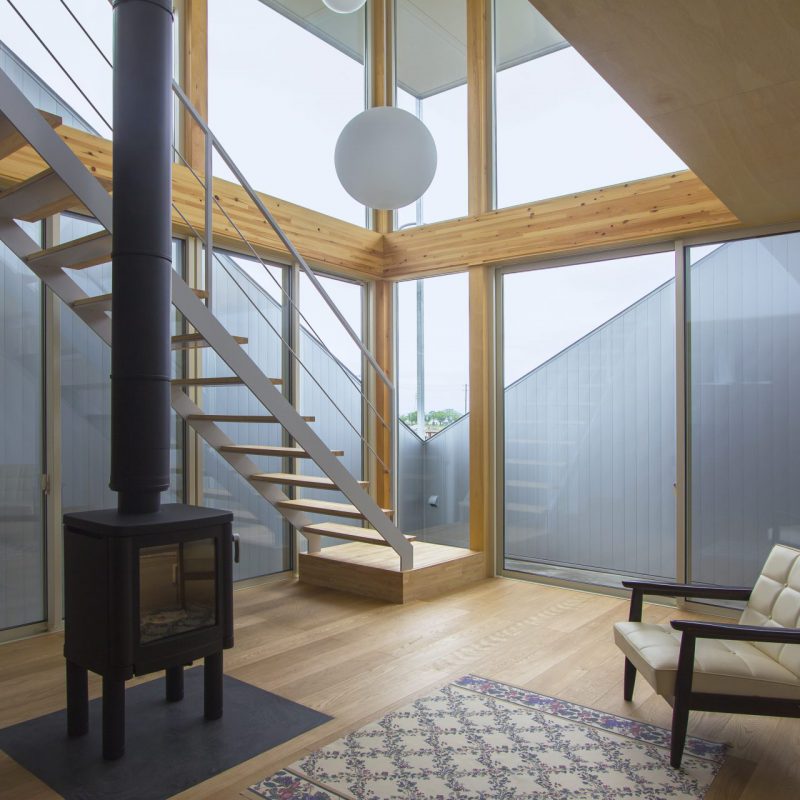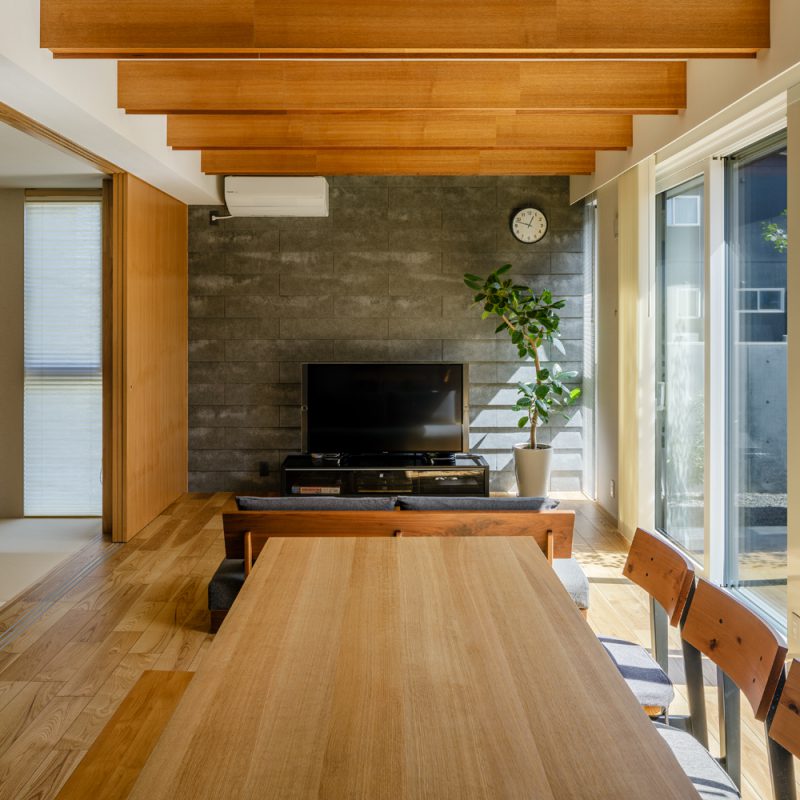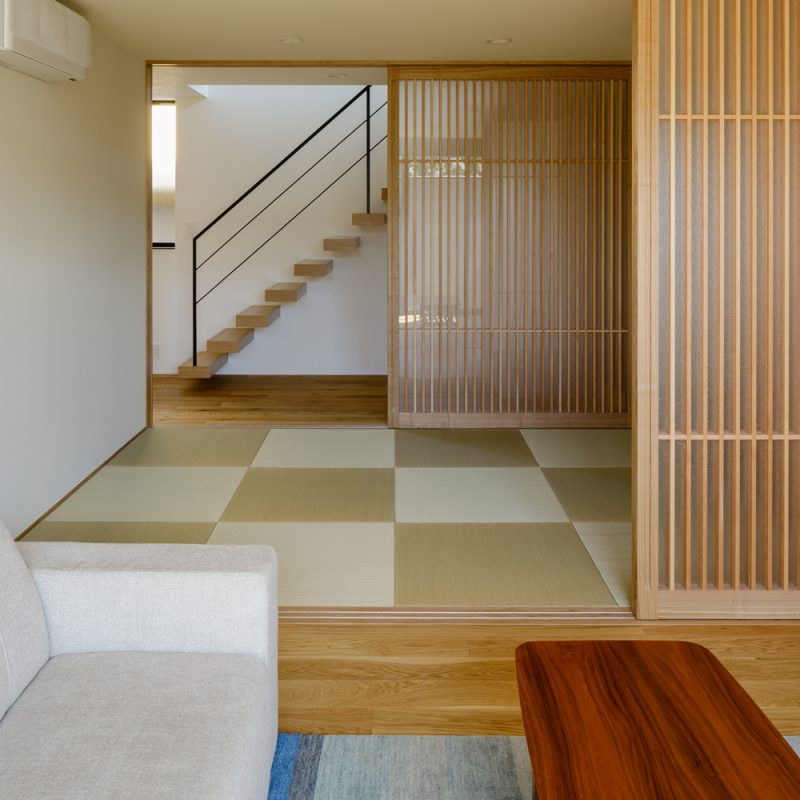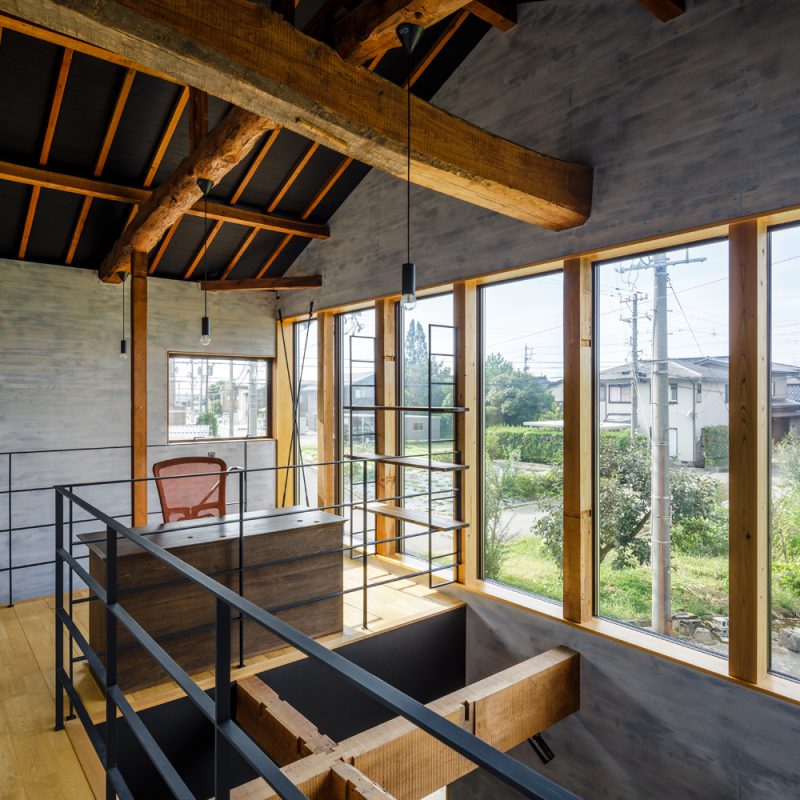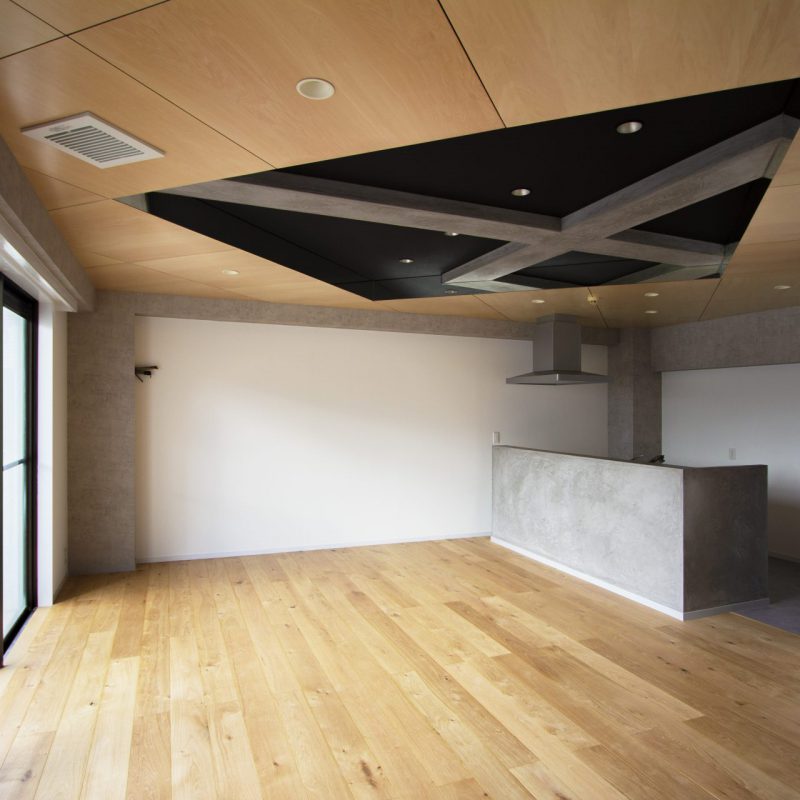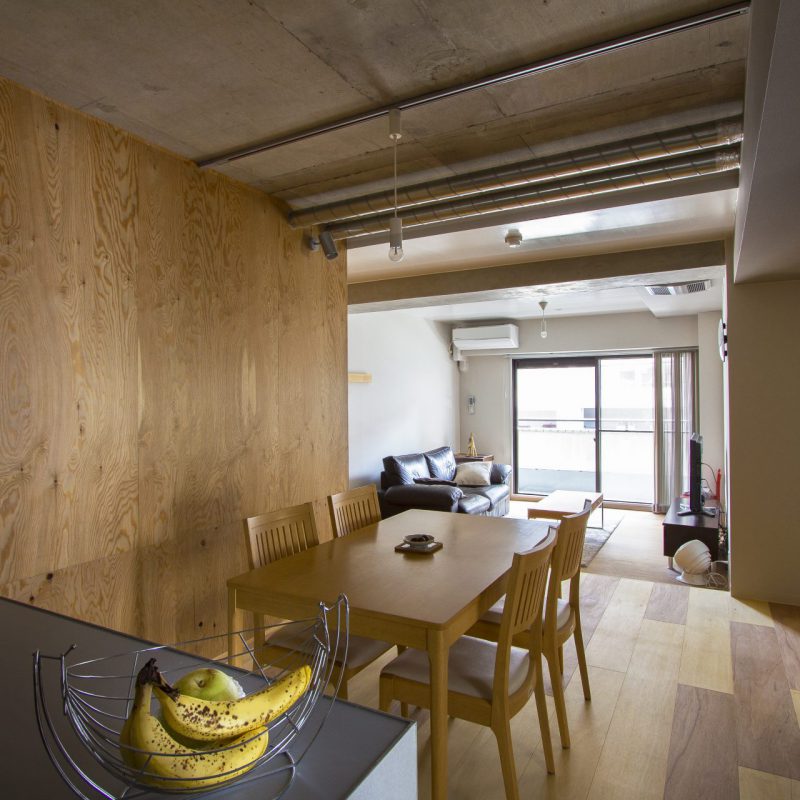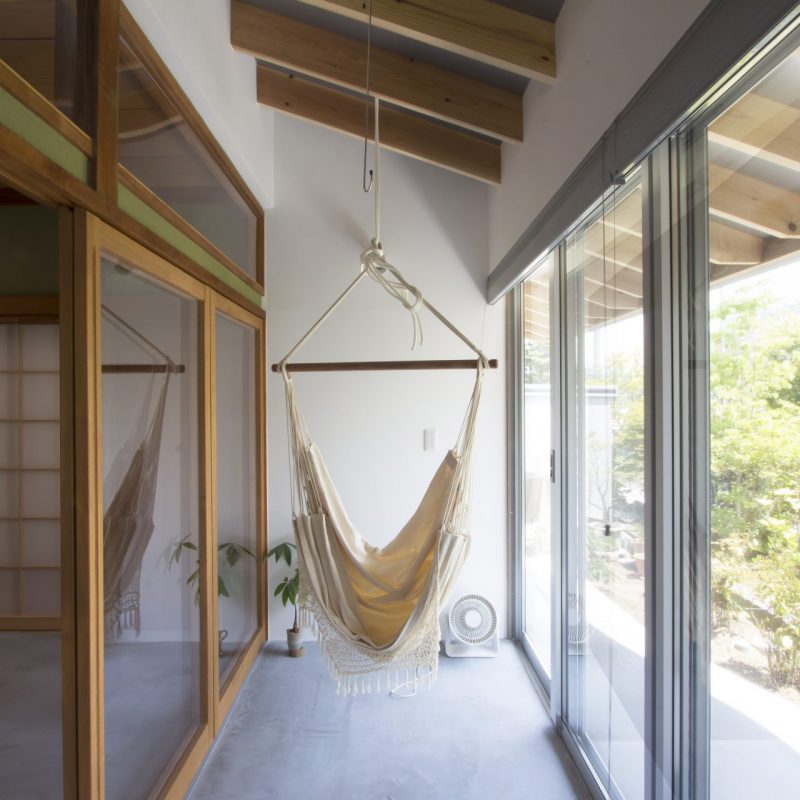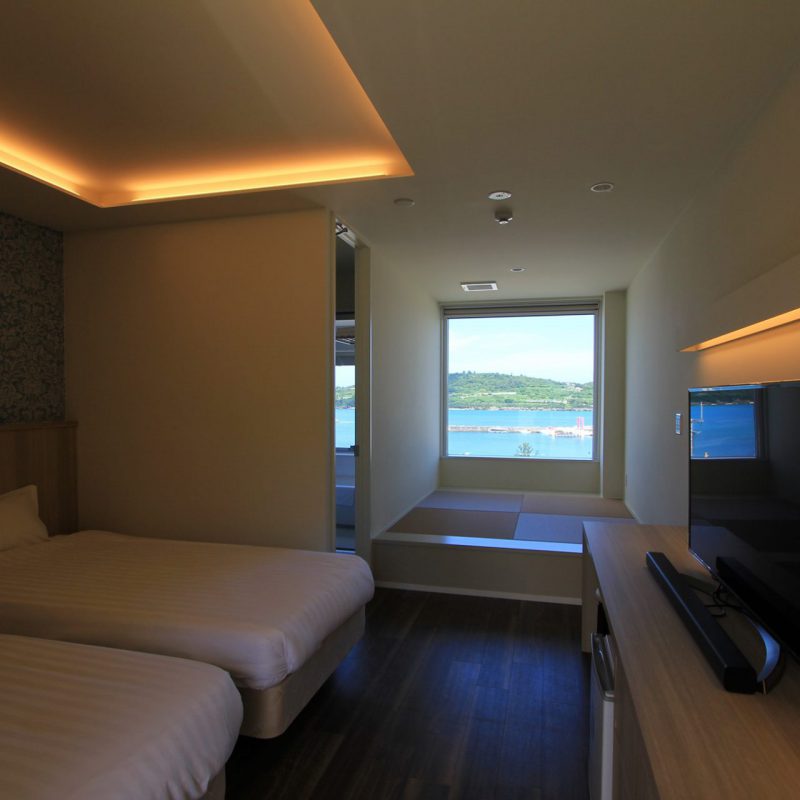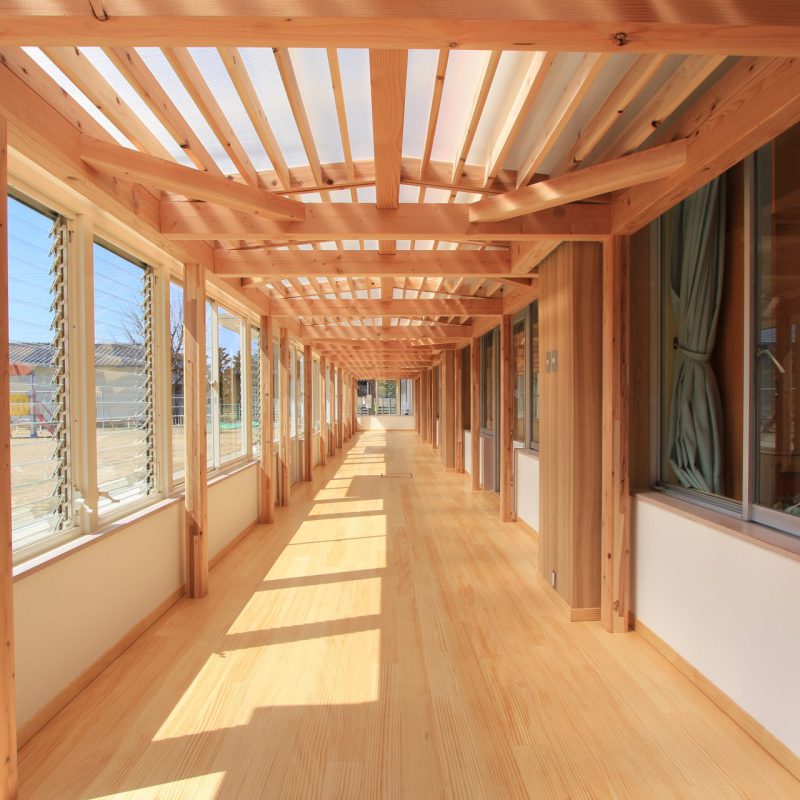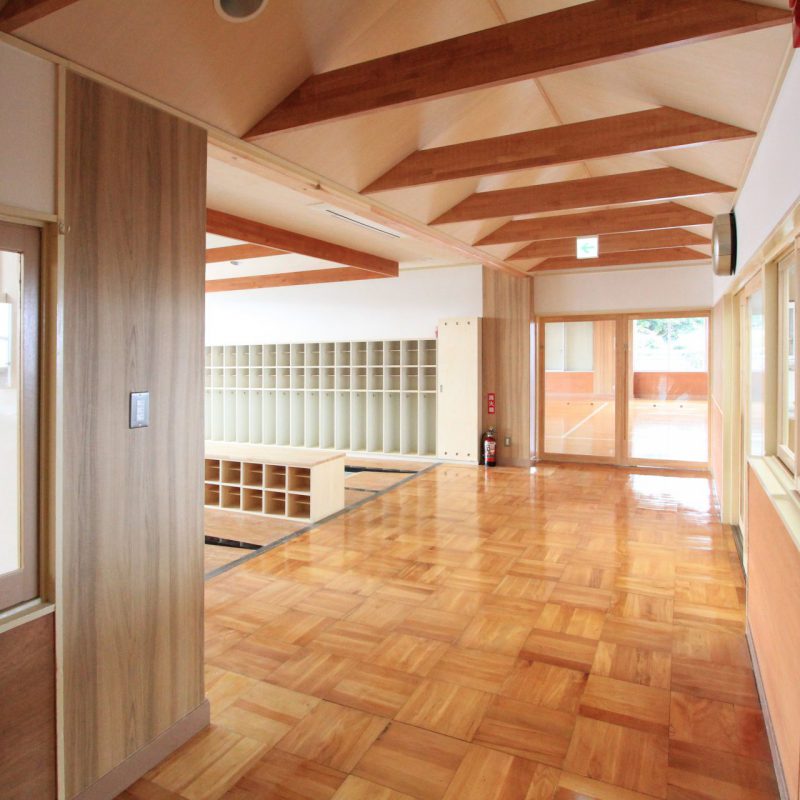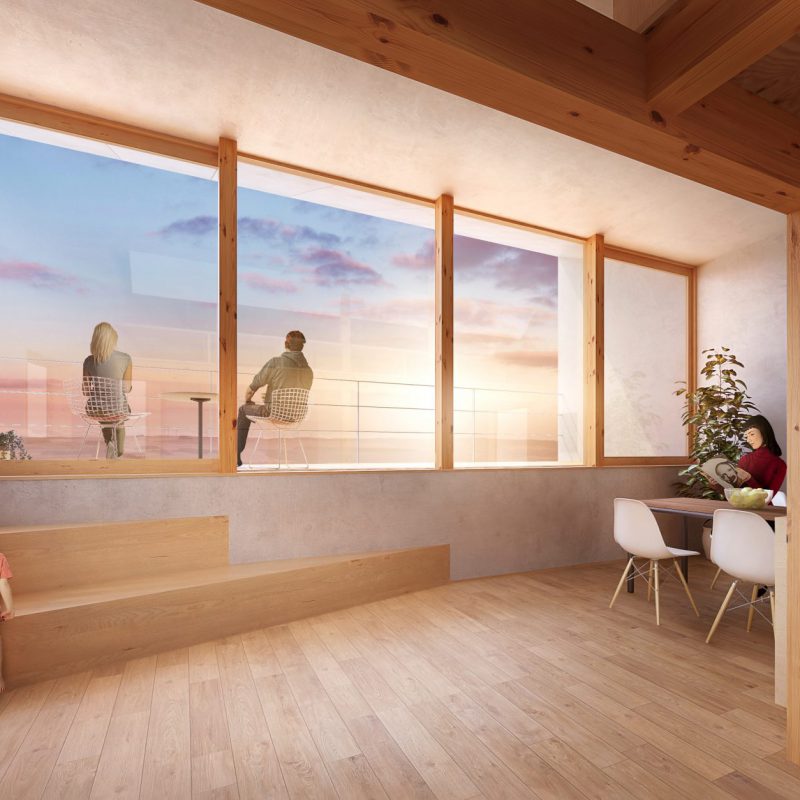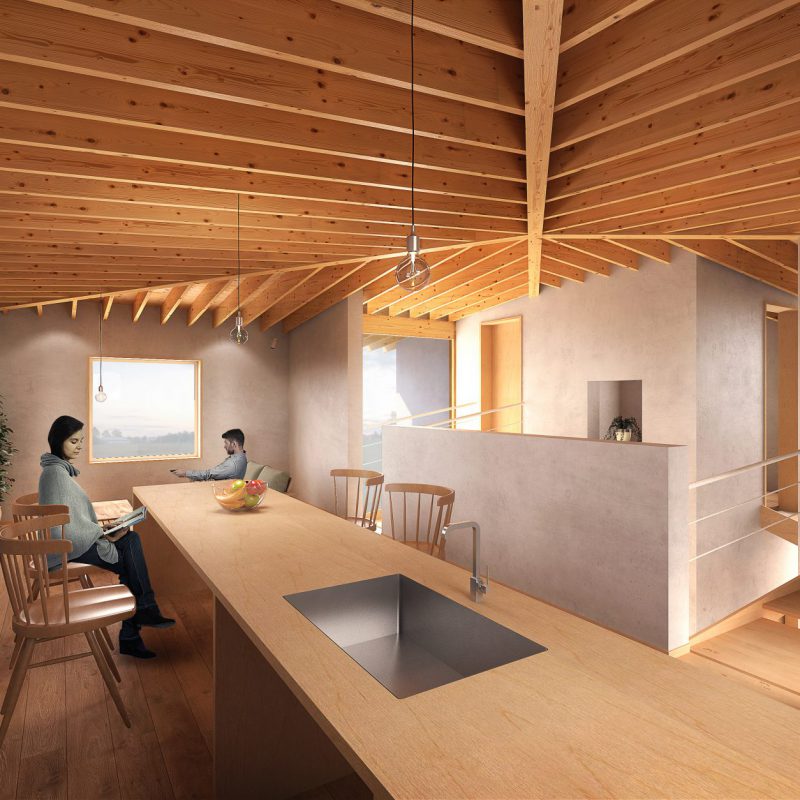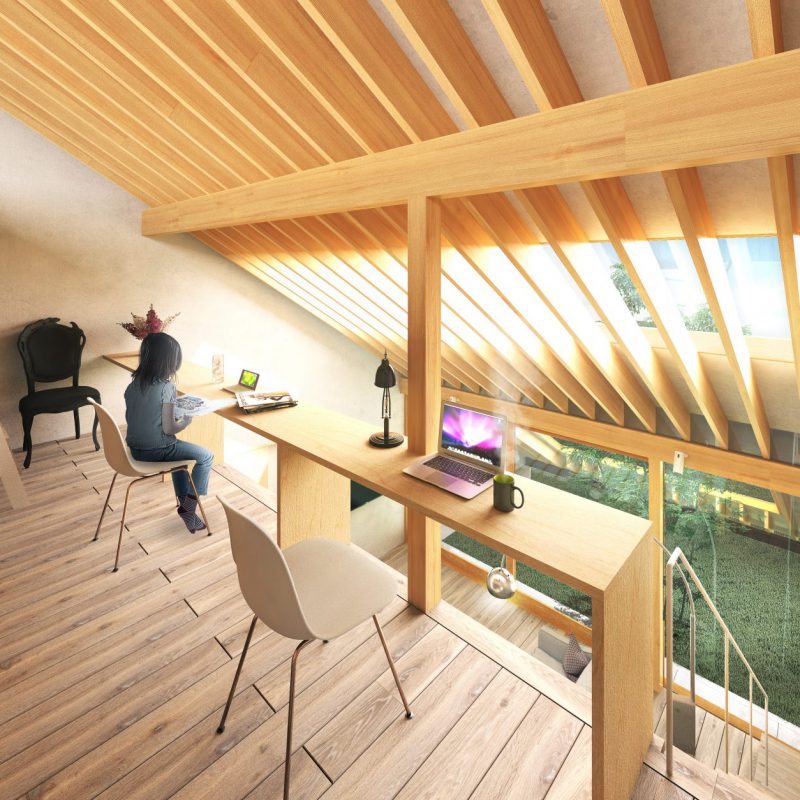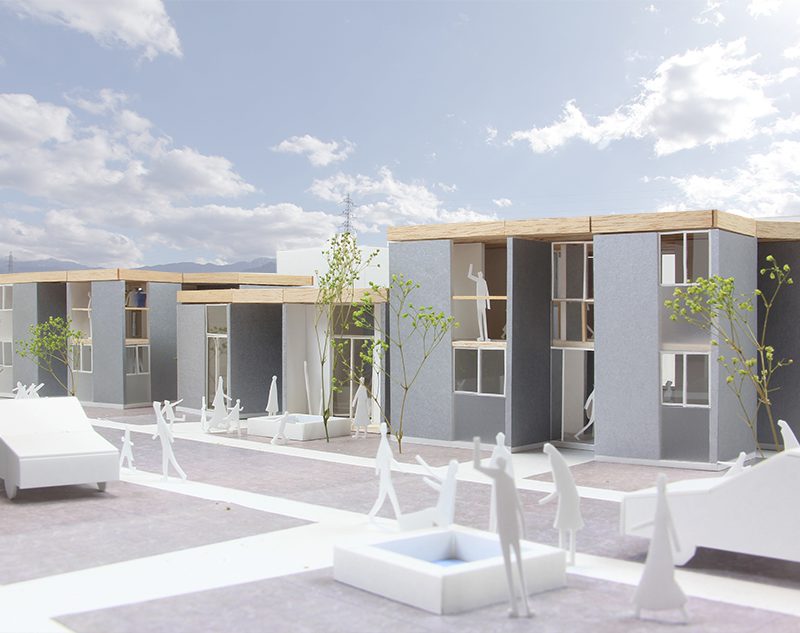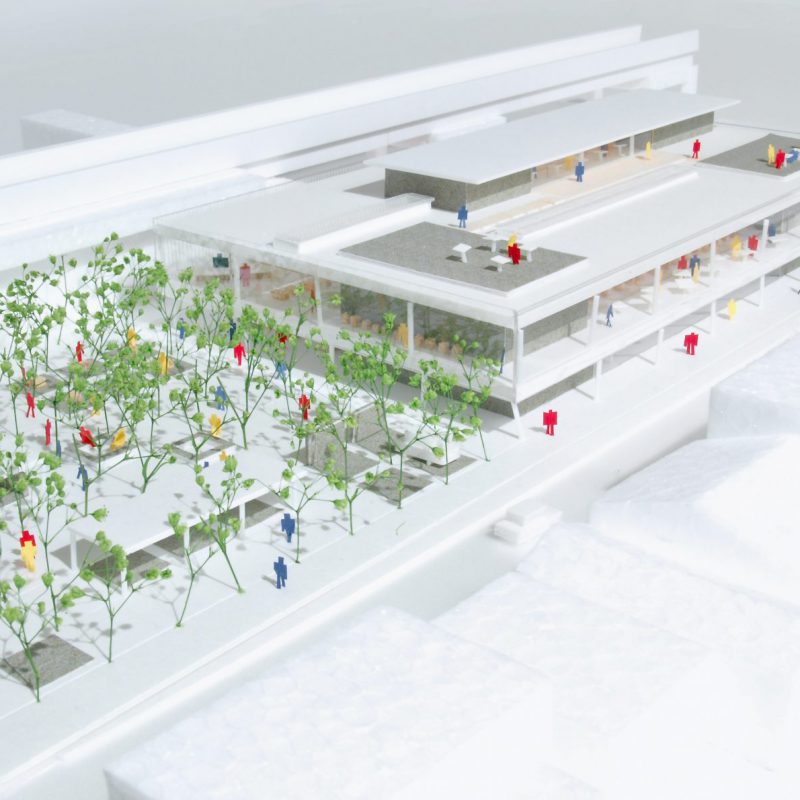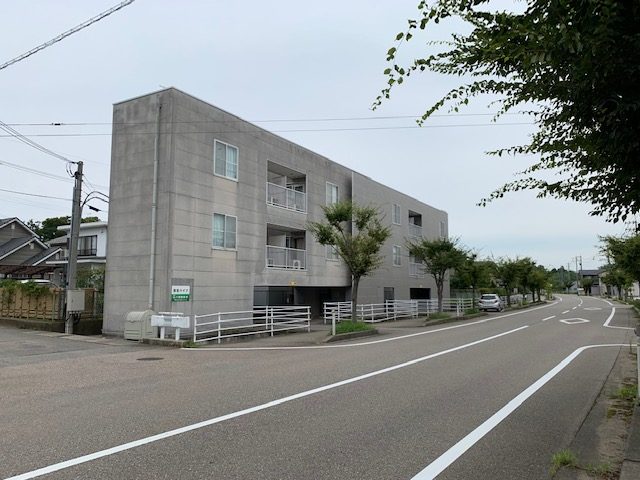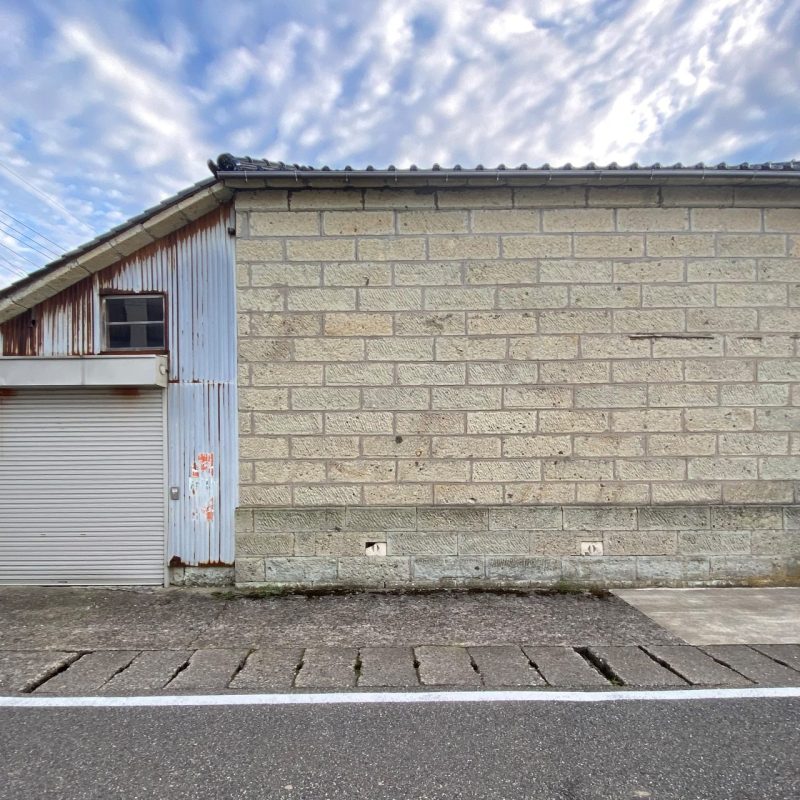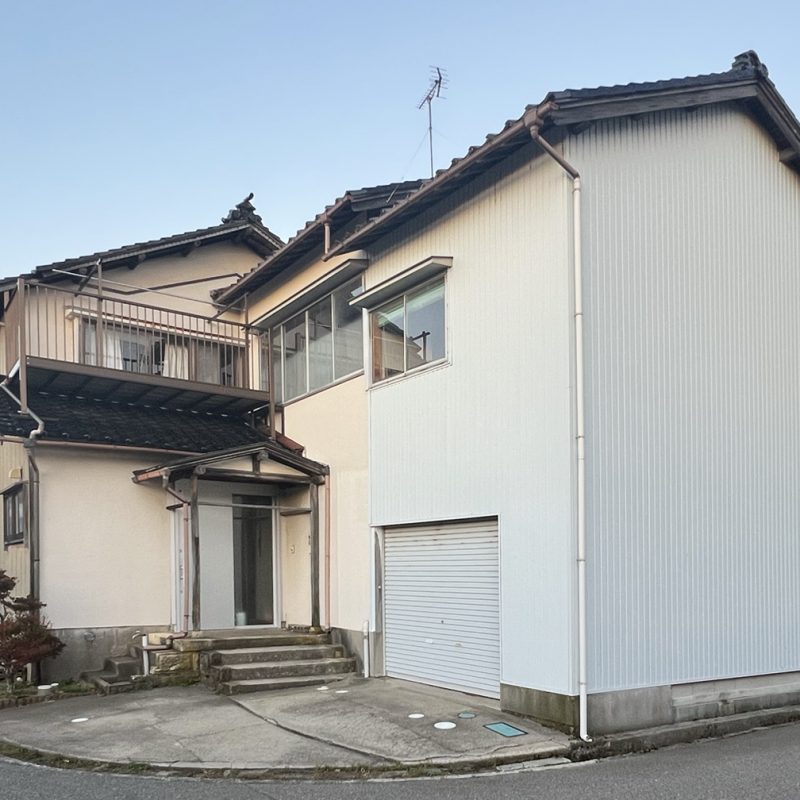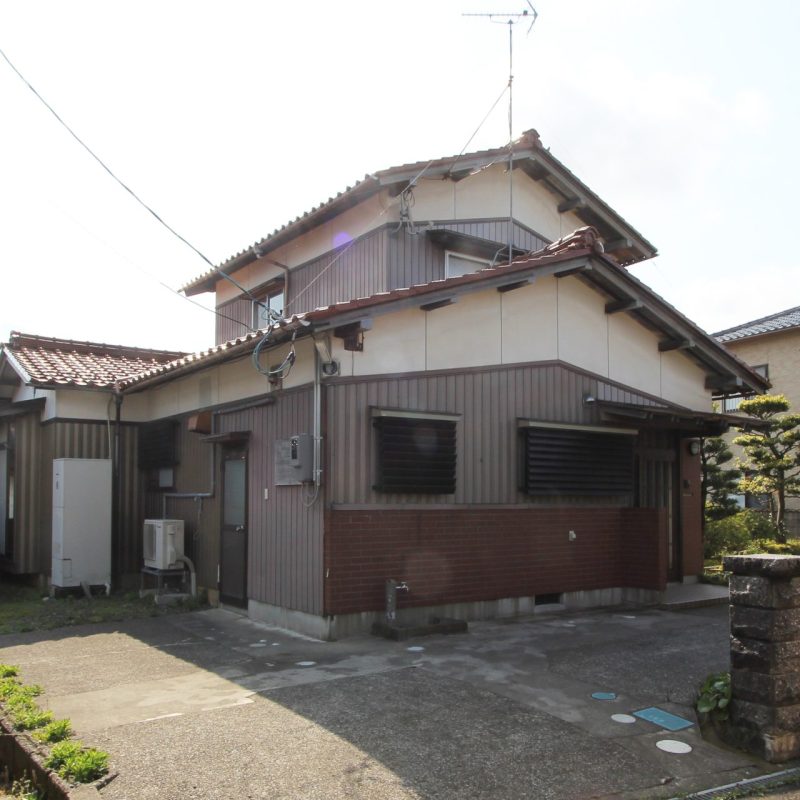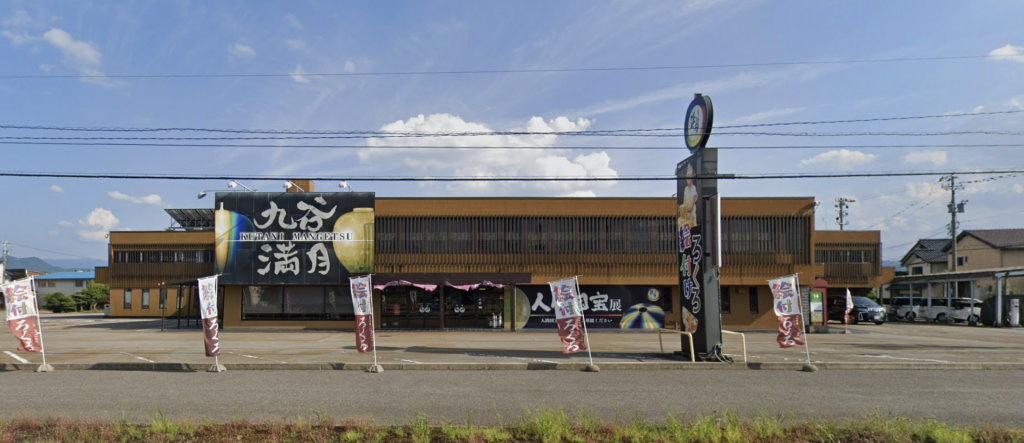
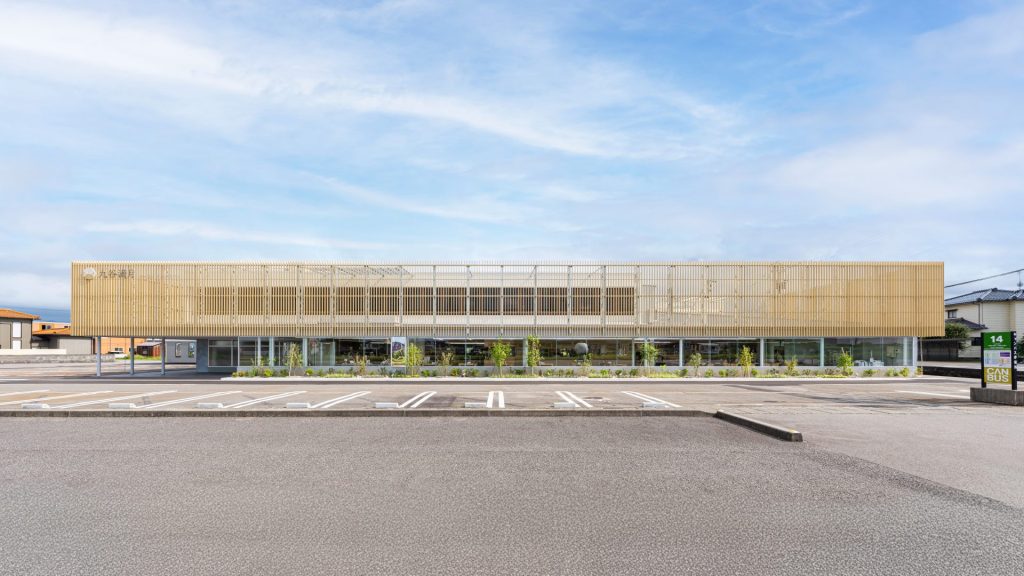
ロードサイドにある店舗のリニューアル
九谷焼複合施設のリニューアル計画である。
明暦元年(1655)から脈々と育まれてきた九谷焼文化を、体験・発信していくことのできる施設として、また、地域の方々が気軽に訪れることのできる交流地点としての施設のあり方が求められた。
その上で、元ある建物の蓄積を踏襲しながらも、九谷焼の特性を汲み取りそれを生かした、明るく活力ある建物を目指し計画を行った。
九谷焼の主要な産地である石川県加賀地区は、豊かな地下資源を有し、古くから石によるモノづくりが行われてきた地域である。その礎は、2000万年前の地殻変動により日本海側の火山活動が活発化したことで、さまざまな地下資源が生み出されたこととされており、この地下資源をもって、九谷焼は生成され受け継がれてきた。
その中で、九谷焼の原料として使われているのは「花坂陶石」と呼ばれる石材である。
江戸時代後期に小松市花坂地区で鉱脈が発見されて以降、現在も採掘され続けている希少な陶石である。
九谷焼の原料になる花坂陶石も質の良いものと悪いものがある。その違いは風化が進んでいるかどうか。風化が進んでいるものは質が良く、柔らかくて、手で簡単にパラパラと崩すことができる。逆に、風化が進んでいないものは硬い。
九谷焼は、そんな繊細な素材の結晶から生まれた文化である。
その繊細さを建物計画に取り入れようと考え計画を行った。
計画した建物正面には約80mに及ぶルーバーの壁面を設置した。どこか重苦しさを感じる、マッシブな既存のボリュームを覆い包むように、パラパラと。
このルーバーの色彩は「花坂陶石」の色味から抽出したもの。この細やかな縦ルーバーによって、建物を見る角度、時間、天候等によってファサードの表情が繊細に揺らぎ続ける。
室内の天井にも積極的にルーバーを設置し、その上に排煙設備を兼ねるトップライトを設置し、常に木陰の下にいるような居心地の良い空間を目指した。
建物中枢に位置するカフェは、九谷焼の原料を身近な素材として感じられるよう「花坂陶石」の骨材を織り交ぜた左官仕上げの壁とし仕上げている。
様々に設置されたソフト機能(体験コーナーやカフェ、販売所)の中に九谷焼の繊細さが生きるよう計画を進めていった。
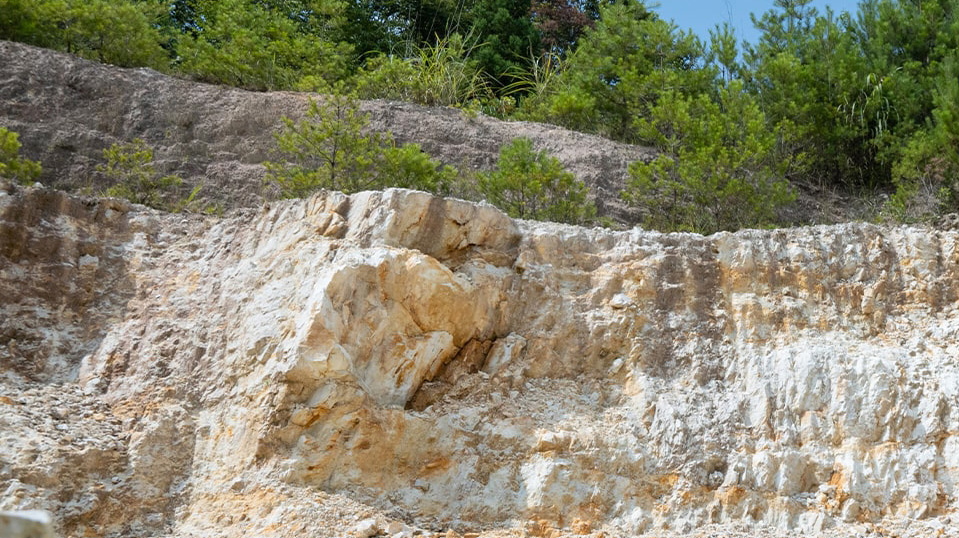
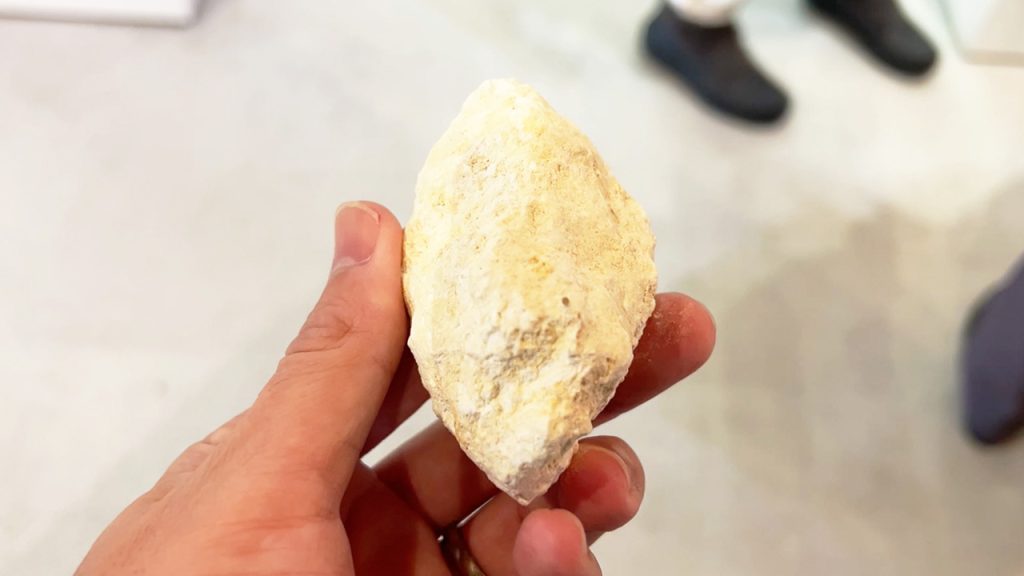
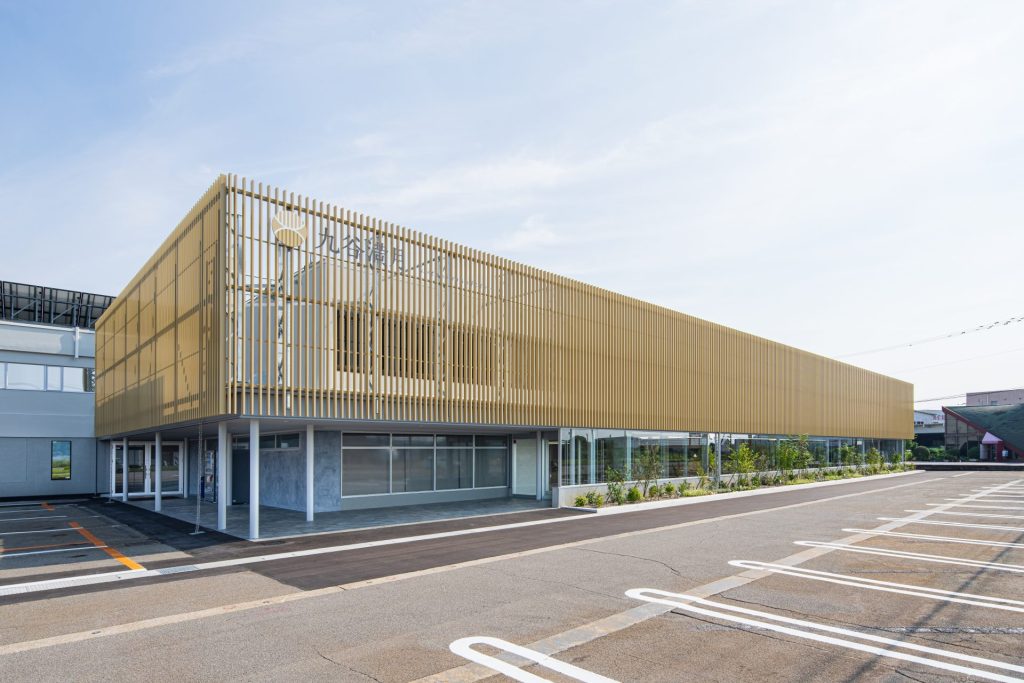
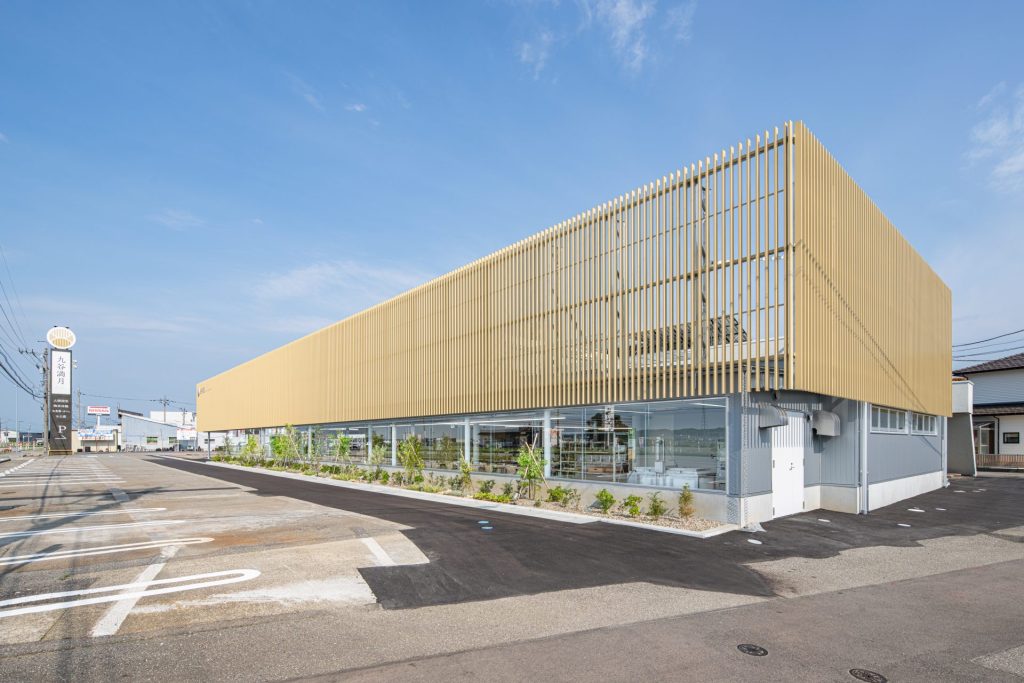
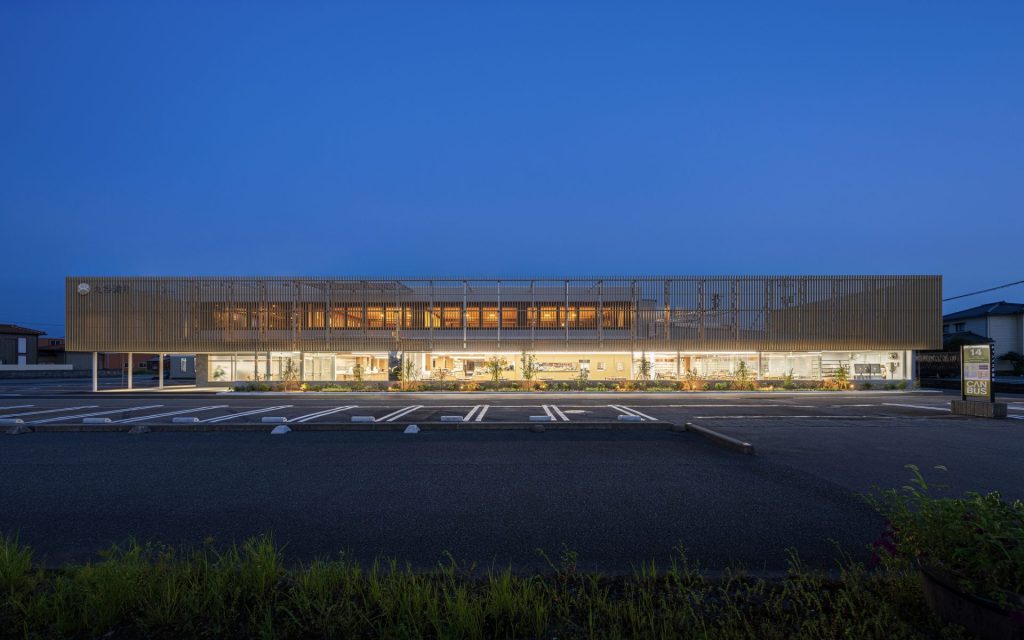

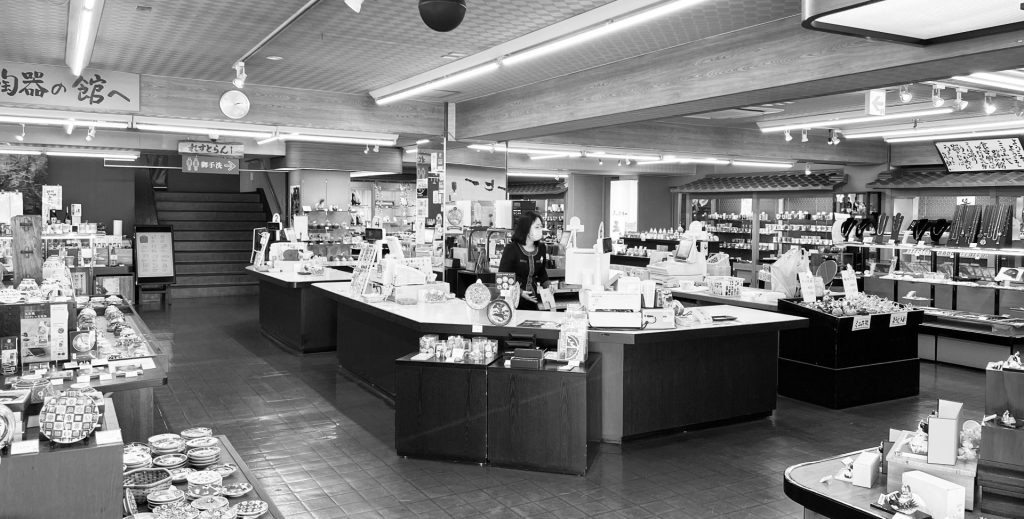

窓辺のカフェ。常に明るい光に満ちる。左に見えるのは花坂陶石を練り込んだ左官仕上げの厨房。
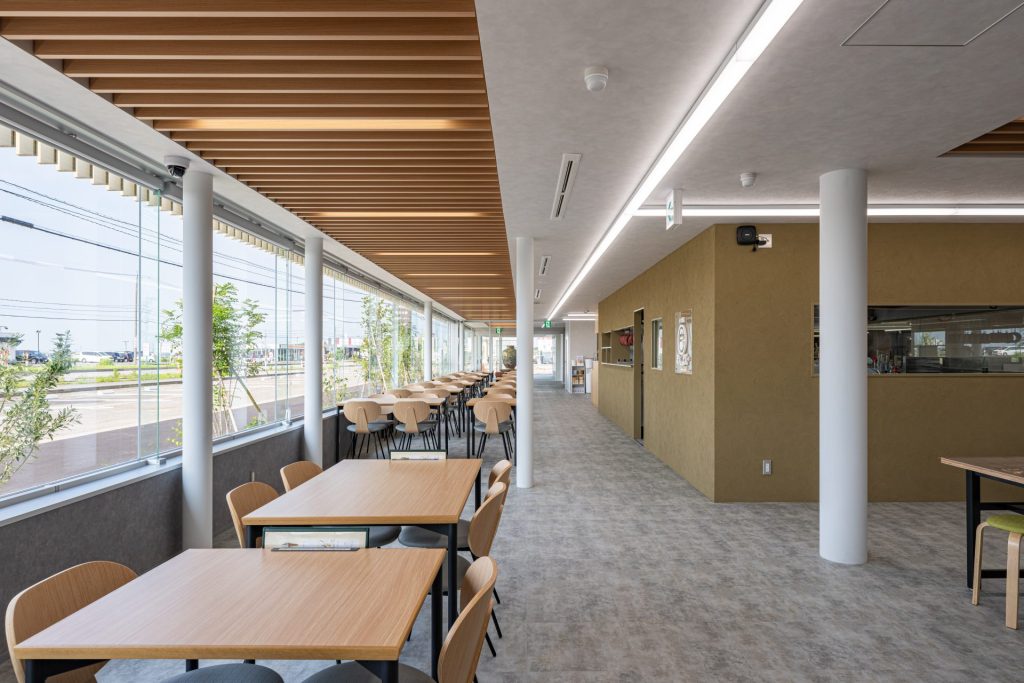
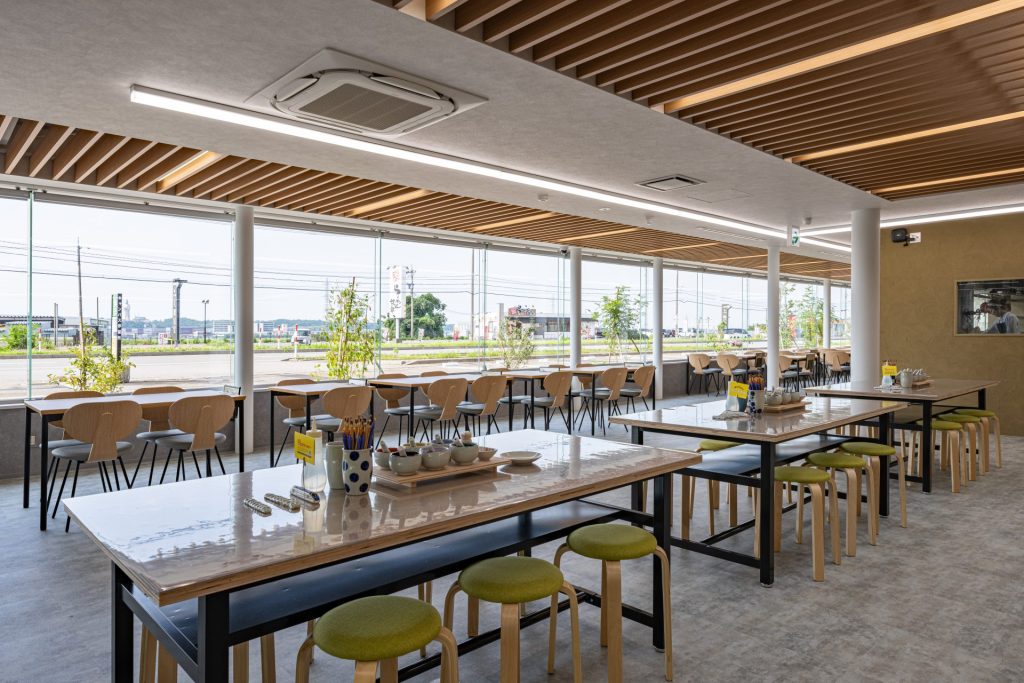
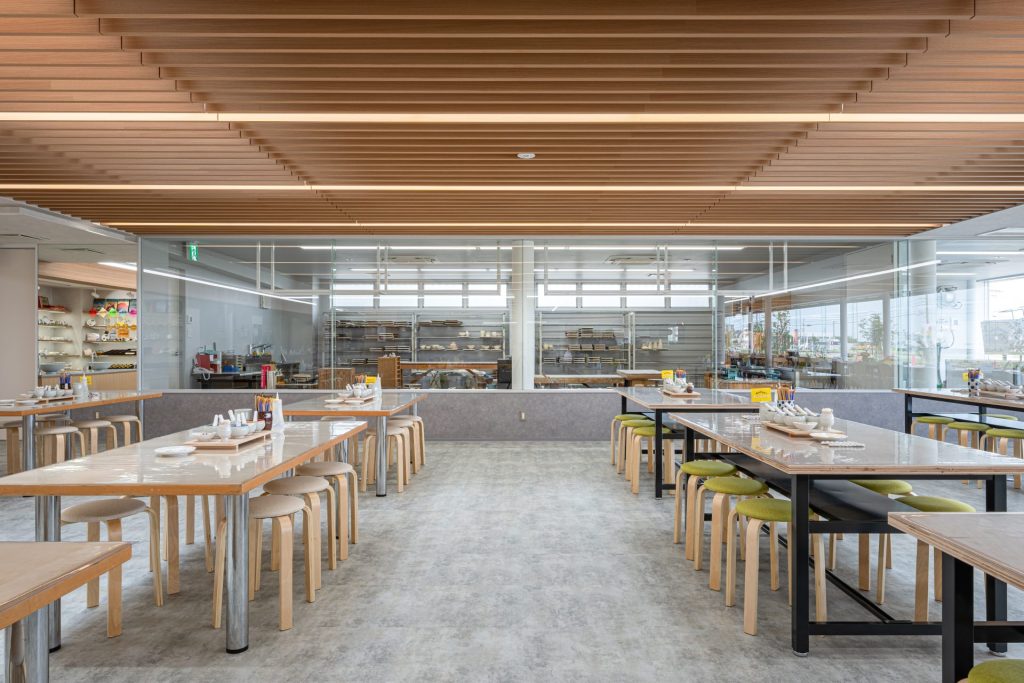
絵付け体験コーナー。奥に見えるのが実際の九谷焼の工房と窯場。常に実際の作業風景を望むことができる。
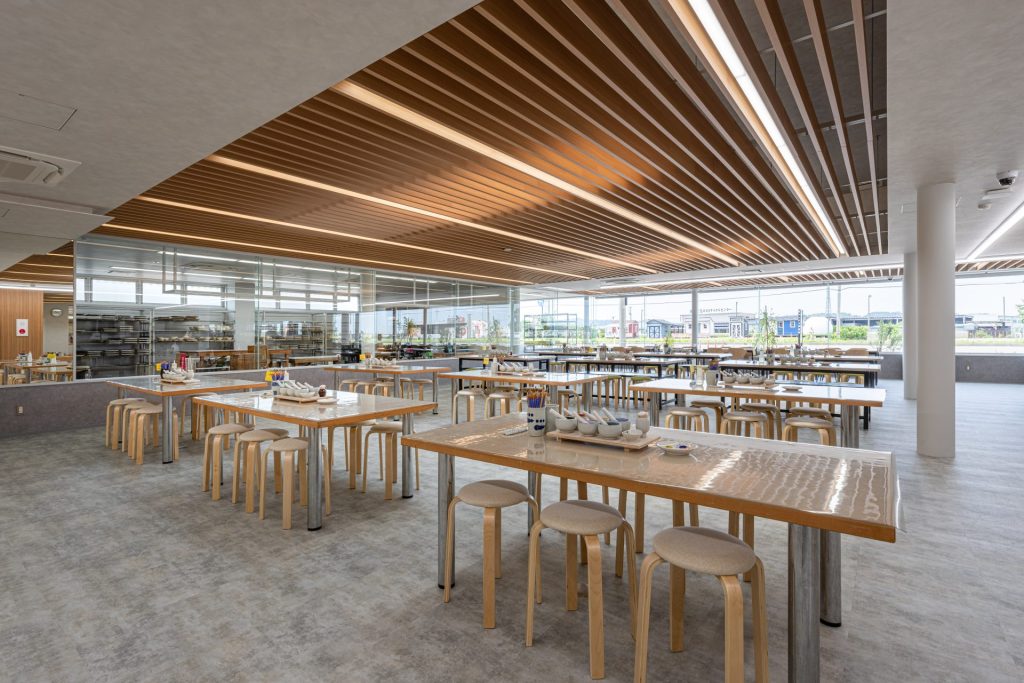
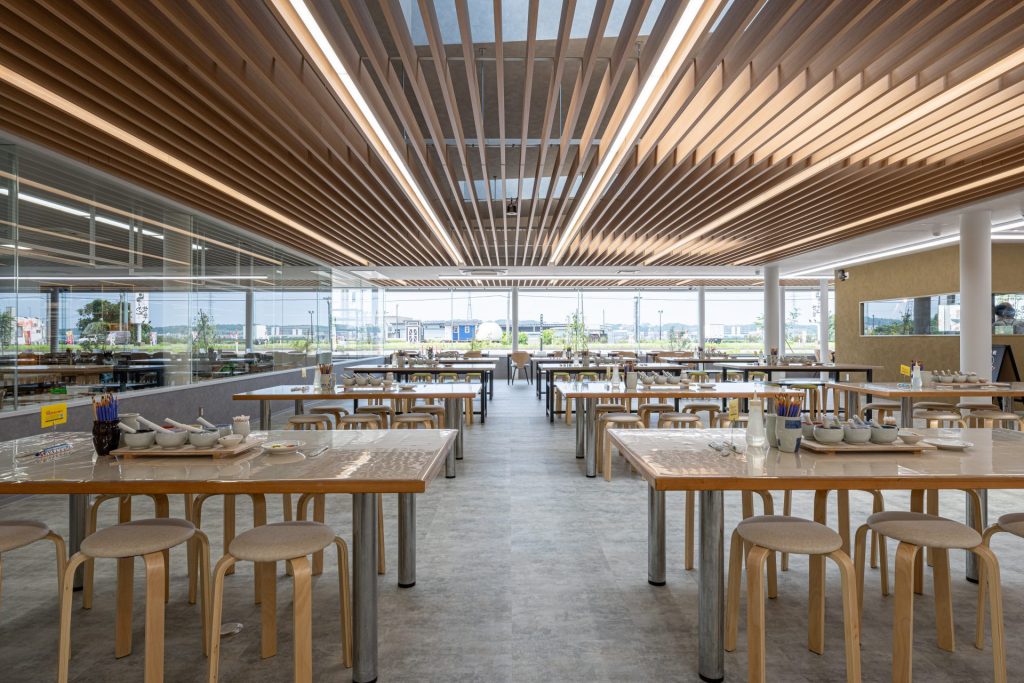
天井に設置したトップライトからは木漏れ日のように光が落ちる。
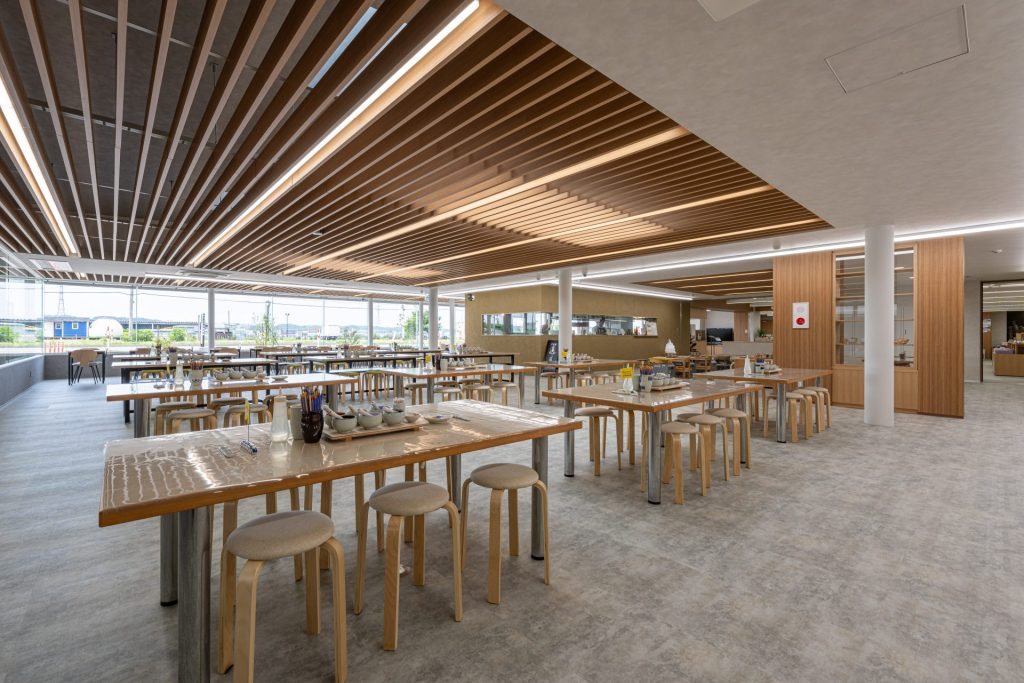
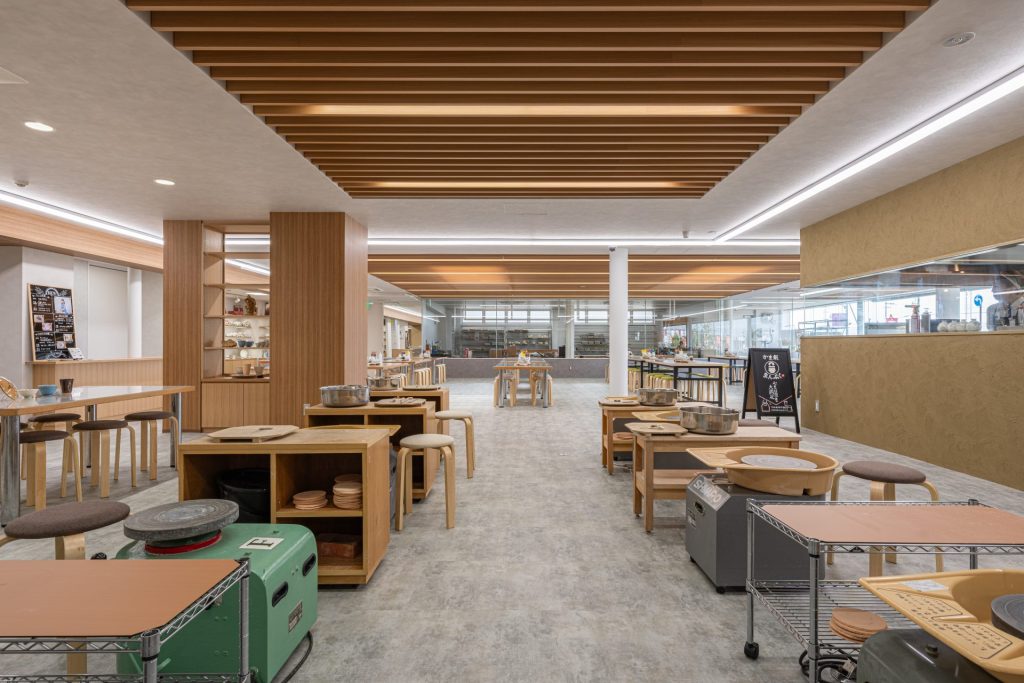
ろくろコーナーから絵付け体験コーナー、工房を望む。

Photo by Takashi Mukai


Photo by Kazuto Nishi
Renewal of a roadside store
This is a renewal plan for a Kutani ware complex.
The facility was to be a place where Kutani ware culture, which has been nurtured since 1655, could be experienced and transmitted, and a place where local residents could casually visit and interact with each other.
The plan was to create a bright and vibrant building that would retain the original building’s heritage while taking advantage of the characteristics of Kutani Yaki and making the most of them.
The Kaga area of Ishikawa Prefecture, a major production center of Kutani ware, is rich in underground resources and has long been a region where stone has been used for manufacturing. The foundation of this tradition is believed to be the creation of various underground resources as a result of active volcanic activity on the Sea of Japan side due to crustal movement 20 million years ago, and with these underground resources, Kutani ware has been produced and passed down through generations.
Among these, the stone material used as the raw material for Kutani Yaki is called “Hanasaka pottery stone.
This rare ceramic stone has been mined since a vein of ore was discovered in the Hanasaka area of Komatsu City in the late Edo period (1603-1868).
Hanasaka ceramic stone, which is used as a raw material for Kutani ware, has both good and bad quality. The difference is whether the stone has been weathered or not. Weathered pottery is of good quality, soft, and can be easily crumbled by hand. On the other hand, those that have not been weathered are hard.
Kutani ware is a culture born from the crystallization of such delicate materials.
We planned to incorporate this delicacy into the building project.
The front of the planned building has a louvered wall that extends approximately 80 meters. The existing massive volume, which has a somewhat heavy feeling, is covered by the louvers.
The color of these louvers was extracted from the color of “Hanasaka ceramic stone. These fine vertical louvers allow the façade to continue to delicately fluctuate in expression depending on the angle from which the building is viewed, the time of day, the weather, and other factors.
The louvers were also actively installed on the interior ceilings, and a top light that also serves as a smoke exhaust system was installed above the louvers to create a cozy space that always seems to be under the shade of a tree.
The café, located at the center of the building, is finished with plastered walls interwoven with aggregates of “Hanasaka pottery stone” so that the raw materials of Kutani ware can be felt as familiar materials.
The plan was developed so that the delicacy of Kutani Yaki would be reflected in the various soft functions (experience corner, café, and sales office).
Translated with DeepL.com (free version)

